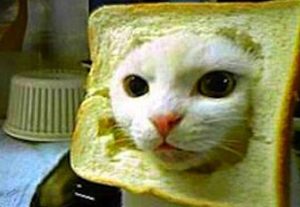The world loves cats. They’re a cute and cuddly companion species that we have been breeding for thousands of years.The world also loves charismatic megafauna, large animal species with widespread public appeal due to their magnificence, expressiveness and sometimes human-like qualities. Examples of these easy-to-love species include tigers, panda bears and marine mammals.
 So, what to do when a conservation crisis arises pitting cats against an endemic, charismatic marine mammal – in this case, the Hawaiian Monk Seal?
So, what to do when a conservation crisis arises pitting cats against an endemic, charismatic marine mammal – in this case, the Hawaiian Monk Seal?
On the first day of our Duke Marine Conservation Biology travel course in Honolulu, we met with two members of the Hawaiian Monk Seal Research and Recovery Program at NOAA, Michelle Barbieri and Angela Amlin.
Hawaiian monk seals (Neomonachus schauinslandi) are one of the most critically endangered pinnipeds, endemic to the waters and coastlines of Hawaii, with a population of around 1,400. Thanks to conservation efforts, the population currently has experienced an increase of about 3 percent, but both Michelle and Angela were wary to call this a success, as the population has fluctuated in recent years.
Michelle and Angela went over a lengthy list of the major threats to monk seals – including limited prey availability, entanglement, sea level rise and fish hook ingestion – but they consider Toxoplasmosis to be the biggest threat to monk seals.
Toxoplasmosis (Toxo) is a disease resulting from infection by the Toxoplasma gondii parasite, and it’s very prevalent in the feral cat population in the Hawaiian Islands. The parasite is transmitted through cat feces and carried to the ocean in runoff and sewage. There, the parasite’s frighteningly hardy oocyst, or eggs, can survive in seawater for up to two years. Because of the uncontrolled feral cat populations on the Hawaiian Islands (the cat population on Oahu alone is estimated to be 300,000), this disease has become a common killer of bird species, as well as marine animals like the monk seal.
 So far, it has been proven that at least eight Hawaiian monk seals have died from Toxo. That number is likely conservative though, as it is hard to prove death by Toxoplasmosis.
So far, it has been proven that at least eight Hawaiian monk seals have died from Toxo. That number is likely conservative though, as it is hard to prove death by Toxoplasmosis.
Last year, the Department of Land and Natural Resources (DLNR) supported a proposal to simply ban feeding cats on state lands, but the bill was abandoned after an outpouring of testimony against it. The Hawaii Humane Society opposed the bill, in addition to hundreds of local citizens.
The issue remains unresolved. Not enough is being done to control cat populations on the main islands, so there is little that the team at NOAA can do to prevent the spread of this disease in monk seals.
As Angela said, “Conservation doesn’t happen in a vacuum.” Protecting monk seals from Toxo needs to start with controlling cat populations. While no one wants to think about euthanizing cats, both Michelle and Angela see it as a necessary step in safeguarding the endangered Hawaiian monk seal populations in the future.
